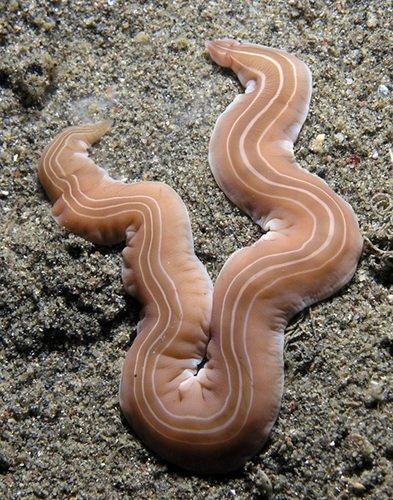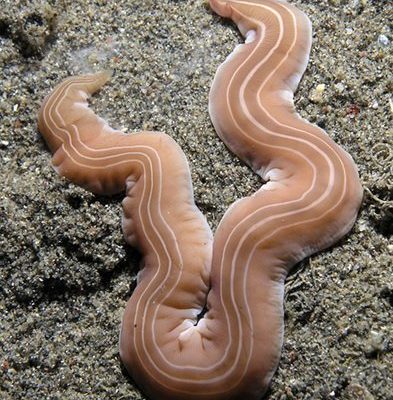
Ribbon worms, belonging to the phylum Nemertea, are elongated, soft-bodied invertebrates found in various habitats, from sandy beaches to deep-sea environments. Their behaviors are closely tied to the changing seasons, offering a glimpse into not just their biology but also the health of marine ecosystems in temperate zones. So, if you’re curious about how these worms navigate seasonal changes, let’s dive into their world!
Overview of Ribbon Worms
To start, let’s explore what ribbon worms are all about. These elongated creatures can range from a few centimeters to several meters long. With their long, ribbon-like shape, they can often be mistaken for other types of worms, but their unique characteristics set them apart.
Ribbon worms are primarily carnivorous, feeding on small invertebrates, and they have a specialized feeding structure called a proboscis. This proboscis allows them to capture prey quickly, almost like a retractable fishing rod! It’s this feeding technique that supports their role in the marine food web, as they help control the population of smaller organisms.
In temperate zones, ribbon worms thrive in both marine and freshwater environments. They can often be found in tidal zones, mudflats, and even within the sediment of shallow waters. Their ability to adapt to different habitats is one reason why they can be so widespread.
The Role of Temperature in Ribbon Worm Behavior
Temperature is one of the most significant factors that influence the seasonal behavior of ribbon worms. As winter fades and spring arrives, the increased warmth in the water leads to a surge in ribbon worm activity. They emerge from their burrows and start foraging for food, taking advantage of the abundance of prey.
In winter, when temperatures drop, ribbon worms tend to become less active and may even enter a state similar to hibernation. They slow down their metabolism and retreat into the sediment for protection against the cold. This phenomenon is pretty typical in many marine organisms, as they adapt to survive harsh conditions.
By understanding how temperature affects their behavior, researchers can learn more about the broader implications for marine ecosystems. Changes in water temperature due to climate change could impact not just ribbon worms but the entire food web in which they exist.
Breeding and Reproduction Patterns
When spring rolls around, ribbon worms aren’t just thinking about food—they’re also in the mood to breed. Most ribbon worms are dioecious, meaning they have separate male and female individuals. During the warmer months, mating occurs, and this is when their vibrant colors often become more pronounced.
The female ribbon worms usually release eggs into the water column, which is quite a fascinating process. The fertilization happens externally, and the larvae that hatch might drift in the water for a while before settling into their new homes. This reproductive strategy allows for a greater chance of survival, as it spreads the species over a wider area.
After the breeding season, the young ribbon worms start their life cycle, leading to the next generation of these unique creatures. This pattern of synchronization with seasonal changes helps ensure that the young ones have plenty of food sources and suitable habitats to grow.
Feeding Behavior Throughout the Seasons
The seasonal behavior of ribbon worms also extends to their feeding habits. As the seasons change, so does the availability of food. In spring and summer, when food is plentiful, ribbon worms are particularly active. They use their proboscis to capture prey like small crustaceans and polychaete worms.
As autumn approaches, some species may begin to store energy in their bodies in preparation for the colder months ahead. This behavior helps them survive when food becomes scarce. During winter, they tend to slow down their feeding significantly, relying on the energy reserves they built up.
This seasonal pattern of feeding not only helps ribbon worms survive but also has a ripple effect on the ecosystem. By controlling prey populations, they contribute to the balance of life in their environments.
Habitat Changes and Environmental Impacts
The habitats of ribbon worms are subject to seasonal changes as well. In temperate zones, different seasonal conditions, such as currents and water levels, can affect where ribbon worms are found. For instance, during heavy rains, freshwater runoff can change the salinity of coastal areas, affecting their distribution.
In addition to natural changes, human activities, such as coastal development and pollution, can impact these habitats. Ribbon worms are sensitive to changes in their environment, and monitoring their seasonal behavior can act as an indicator of ecosystem health.
By studying how ribbon worms respond to habitat changes, researchers gain a better understanding of the broader implications for marine ecosystems, helping to inform conservation efforts and protect these unique creatures.
Understanding the seasonal behavior of ribbon worms offers valuable insights into marine ecosystems in temperate zones. From their feeding patterns to breeding habits and habitat changes, these worms play a critical role in the health of their environments.
So, the next time you come across a ribbon worm, remember that there’s a lot going on beneath that soft, elongated body. Their behavior is a fascinating reminder of the complexities of life in our oceans, and they serve as a crucial component of the food web.
By learning more about these unique creatures, we can appreciate the delicate balance of nature and the importance of protecting our marine ecosystems. After all, every little bit helps in keeping our oceans healthy!

